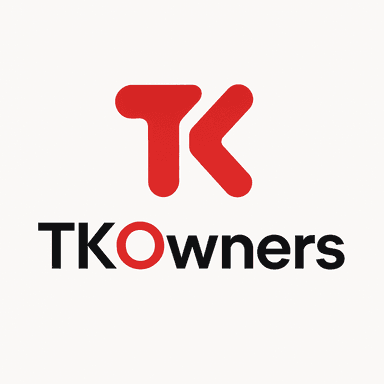Overview / Executive Summary
If you’ve ever walked into a living room and thought, “This could use a turbocharged centerpiece,” you’re not alone. The engine block coffee table is a beautifully absurd fusion of gearhead culture and interior design and the market is revving up. With car enthusiasts hunting for one‑of‑a‑kind home décor and consumers craving statement furniture, now is the perfect time to turn “junkyard art” into a premium furniture business.
Value Proposition
We’re not just slapping a V8 under a slab of glass. We’re delivering bespoke, functional art that tells a story. Every table is built from a real engine block, fully cleaned, painted, and sealed. Options like LED lighting, tempered glass tops, or even built‑in fire pits? All on the table. Literally.
- Real performance history turned into home décor
- Customization and personalization for each customer
- Upcycled materials, which also wins points for sustainability
- Each unit is a one‑of‑one centerpiece, not factory‑made furniture
Target Audience
We’re not targeting IKEA shoppers. Our customers:
- Are predominantly male, aged 30‑60
- Own classic cars, motorcycles, or collect auto memorabilia
- Want furniture that doubles as conversation starters
- Have disposable income and an interest in unique, handcrafted products
- Are mechanics, car club members, or home design nerds who like a touch of rebellion
There’s also a niche in commercial spaces automotive shops, dealerships, man caves, and boutique cafes that want to stand out.
Market Landscape
The global luxury furniture market is projected to hit $35.11 billion by 2029, growing at 6.6% CAGR. Meanwhile, the automotive upcycling and gearhead décor space is carving out a lucrative, though fragmented, niche. Custom engine block tables range from $1,000 to $5,000+ depending on design, rarity, and features.
- Listings on Etsy, eBay, and custom shop websites show consistent demand
- DIY and Reddit communities showcase grassroots interest
- Minimal direct mass‑market competition (which is a good thing)
Competitors include boutique makers like:
- Gengineered Tables (UK)
- ManTables
- Local fabricators and eBay sellers doing one‑offs
This leaves a gap for a branded, mid‑to‑premium option with smart distribution and marketing.
SEO Opportunities
There’s solid keyword volume around:
- "engine block table"
- "V8 coffee table"
- "car part furniture"
- "man cave table"
- "upcycled engine décor"
These keywords are low‑to‑mid competition and highly intent‑driven. Targeting them via blog content, product listings, and Google Ads can drive qualified traffic without battling huge retailers.
Go‑To‑Market Strategy
Phase 1: MVP + Validation
- Build 3‑5 tables using commonly available engine blocks (e.g., LS or V8 blocks)
- List on Etsy, Facebook Marketplace, and custom gearhead forums
- Collect photos, testimonials, and reviews to validate demand
Phase 2: Build Brand and Scale
- Launch a DTC Shopify site focused on SEO and storytelling
- Partner with influencers in the car mod or home design niche
- Attend auto shows, Cars & Coffee meets, or home expos with a portable demo unit
- Offer financing or pre‑order options for high‑ticket builds
Example: One seller on Etsy routinely sells custom block tables for $2,500–$3,500 with multiple 5‑star reviews. That’s proof of concept and price point.
Monetization Plan
- Direct Sales: Custom tables priced between $1,500 and $5,000+
- Custom Orders: Customers provide their own engine or request a specific one
- Add‑ons: Lighting kits, fire pit integration, powder‑coated finish
- Merch: Branded gear for enthusiasts
- Commercial contracts: Boutique garages, cafés, and showrooms
Financial Forecast
Year 1 conservative estimate:
- Units sold: 50 tables at average $2,000 = $100,000
- COGS: ~$700/table (engine, glass, labor, materials) = $35,000
- Gross margin: ~65%
- Operating costs (shop rent, tools, marketing, transport): ~$30,000
- Net income: ~$35,000
Break‑even achievable in 6–12 months with strong initial traction.
Risks & Challenges
- Engine sourcing: Junkyards vary. Secure reliable local partners or use nationwide salvage networks.
- Shipping logistics: These things are heavy. Offer white‑glove delivery or work with freight specialists.
- Niche appeal: Focused but not mass‑market. That’s fine, just don’t scale too fast.
- Design quality: Bad welds or cheap glass kill your rep fast. Don’t cut corners.
Mitigation: Start local, nail the product, then scale production once you’ve built buzz and systems.
Why It’ll Work
This business checks every box: high‑margin product, clear niche audience, emotional appeal, and low competition in a growing category. You’re taking a literal hunk of metal and turning it into a $3,000 centerpiece. That’s good business.
So go find some engine blocks, fire up your welder, and make a table that makes people say, “What the hell is that and where can I get one?”
If you’d like, I can turn this into a branded pitch deck, social ad campaign, or even a Shopify wireframe. Just say the word.
